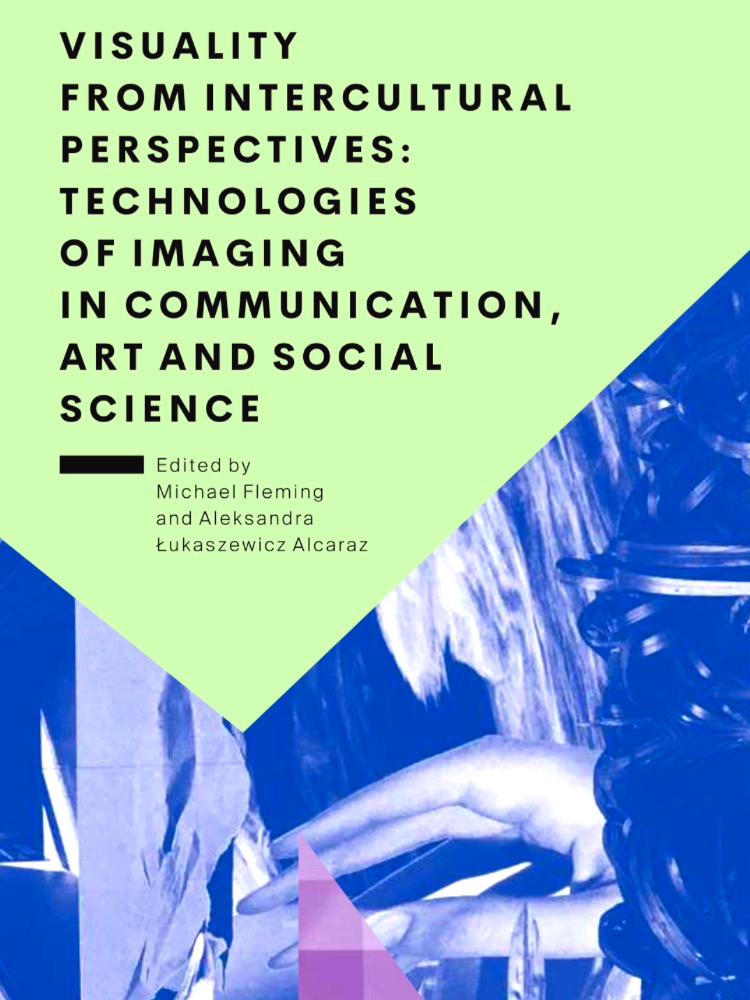New release

Visuality from Intercultural Perspectives. Technology of Images in Communication, Art and Social Sciences
Zapraszamy do lektury pierwszej monografii wydanej w ramach projektu TICASS, która prezentuje wstępne rezultaty współpracy badawczej w projekcie finansowanym przez Komisje Europejską w Horyzont 2020. Książka rozwija rozumienie funkcjonowania przestrzeni wizualnej w różnych miejscach i kulturach oraz wskazuje jak różne formy wizualnej alfabetyzacji kształtują komunikację wewnątrz i pomiędzy społecznościami.
Publikacja, wydana w Gdańsku we współpracy z Wydawnictwem Naukowym Wydziału Malarstwa i Nowych Mediów Akademii Sztuki w Szczecinie, zarysowuje teoretyczne podstawy wizualności w perspektywie międzykulturowej. Autorzy tekstów zawartych w niej pracują w szerokim zakresie nauk społecznych, humanistycznych a także w obszarze sztuki zarządzania. Książka jest przeznaczona przede wszystkim dla osób zajmujących się kulturą wizualną, estetyką, sztuką, komunikacją, edukacją i studiami międzykulturowymi.
"<Visuality from Intercultural Perspectives> stanowi cenny wkład w historyczne i kulturowe rozumienie komunikacji wizualnej" - Prof. Arnold Berleant
List of contents
Preface: Michael Fleming, s. 12
Part 1: Philosophy, Visual Studies and an Evolutionary Approach to Art and Visual Images
1. Aleksandra Lukaszewicz Alcaraz – Iconic language(s) – a new lingua franca or incompatible vocabularies? A pragmatic perspective on visual communication, s. 16.
2.Giuseppe Capriotti - Visual communication between art history and visual studies: the power of images with messages before and after Paul Martin Lester, s. 24
3. Jerzy Luty - An evolutionary approach to art and visual images: Darwinian transformation in the humanities, s. 42
Part 2: Urban Visuality
4. Maria Czerepaniak-Walczak – The question is not what you look at, but what you see (Thoreau). Visual communication in the public sphere from an emancipatory perspective, s. 54
5. Lidia Marek, Urban public space as a space of multi-dimensional communication, s. 62
6. Agnieszka Szajner, Grazyna Czubinska – The influence of multicultural communities on London's public spaces, s. 80
7. Rosita Deluigi – Contexts of visual culture: dialogue between teenage identities and urban spaces, s. 92
Part 3: Art and Culture Visuality
8. Michal Koleček – A work of art at the centre of public interest – stories, characters, forms, and values in the process of social representation, s. 114
9. Adéla Machová – Curator of conteporary art and the public space, s. 140
10. Flavia Stara – New canons of perspective: understanding cultures through the exchange of views, s. 158
Part 4: New Media Visuality
11. Noluvuyo Mjoli – Negotiating the representation of Ubizo (divine calling) in the South African television series "Ubizo - The Calling", s. 168
12. Radoslaw Nagay – Visual Communication 3.0. Communicating visually in 21st century – using modern technologies and understanding various recipients' needs, s. 186
13. Lidia Sapinska – The use of marketing for art's sake, s. 210
Information
Cultural anthropologist specialising in literary studies, art critic; head of the Research Centre on the Legacy of Polish Migration in London
See also
Prace Literaturoznawcze 2023, nr 11
Author/Editor:
Czasopismo "Prace Literaturoznawcze" jest rocznikiem (40 pkt., w bazie Scopus). Powstało w 2013 roku w Instytucie Polonistyki i Logopedii Uniwersytetu Warmińsko-Mazurskiego w Olsztynie.
Essays Commemorating Szmul Zygielbojm
Author/Editor: Michael Fleming
This book brings together papers that were presented at a workshop in May 2018 to commemorate the seventy-fifth anniversary of Szmul Zygielbojm’s protest suicide. The workshop was organised at The Polish University Abroad within the framework of an ongoing seminar series on twentieth century Polish history.5 The volume opens with a message from Zygielbojm’s grandsons, Dr Arthur I. Zygielbaum and Paul S. Zygielbaum, to participants of the workshop (see p. 11), in which they highlight the continuing relevance of their grandfather’s sacrifice (Michael Fleming, Introduction).
Polish-Jewish Re-Remembering
Author/Editor: Sławomir Jacek Żurek
The title of this monograph, Odpamiętywanie polsko-żydowskie [‘Polish-Jewish Re-Remembering’], refers to the post-1989, thirty-year-long process of reviving attention to Polish-Jewish relations in historical, cultural, and literary studies, including the impact of Polish Jews on the development of Polish culture, their presence in Polish social life, and the relationships between Jewish and non-Jewish Poles. That process had been preceded by a long period of silence that fell on the centuries-old presence of Jews in the Polish Commonwealth after their extermination by the Nazis. Jewish studies in the years 1945–1989, concerning both the very presence of Jews and their annihilation in the Holocaust, were very limited: the Communist authorities were interested in neither. As a result, the majority of Poles mentally operate with the Jewish world from before the World War II and with the Shoah as mere artefacts of the cultural processes of post-memory. (From Introduction)
A History of Polish Literature
Author/Editor: Anna Nasiłowska
Translated by Anna Zaranko. Book release: FEBRUARY 2024